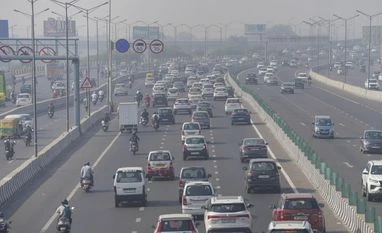On Diwali, large gatherings in Delhi defied the firecracker ban on Thursday, leading to a sharp rise in air pollution levels. On Friday morning, Delhi become the world's most polluted city in the world. By early Friday morning, the capital's air quality had deteriorated significantly, with some areas nearing "severe" levels. At 6 am on Friday, the Air Quality Index (AQI) was recorded at 359, categorising it as "very poor".
Most polluted cities across the world
Delhi was the most polluted city on Friday morning, with an AQI of 359. It was followed by Lahore in Pakistan (AQI of 217), Beijing in China (AQI of 182), Dhaka in Bangladesh (AQI of 174), and Wuhan in China (AQI of 166).
Firecracker use
Despite restrictions, various localities, including Lajpat Nagar, Kalkaji, and Dwarka, reported widespread firecracker use. Areas in west and east Delhi, such as Punjabi Bagh, Vikaspuri, Burari, and Dilshad Garden, also witnessed substantial firecracker activity.
Delhi Air pollution: AQI levels surge across Delhi-NCR
Several areas, such as Burari Crossing (AQI 394), Jahangirpuri (387), and Anand Vihar (395), recorded "very poor" air quality at 6 am. The air quality in the National Capital Region (NCR) cities, including Noida, Ghaziabad, and Gurugram, showed similar trends. Noida recorded an AQI of 293, indicating "poor" air quality, while Ghaziabad and Gurugram reached 316 and 348, respectively, both classified as "very poor".
Delhi AQI: Peak pollution levels on Diwali night
Pollution at many monitoring stations in Delhi-NCR peaked around midnight. Although PM2.5 and PM10 levels declined after 1 am, they remained alarmingly high. Pollution levels began rising sharply after 5 pm on Thursday, coinciding with extensive firecracker activity across the capital.
In some areas, PM2.5 concentrations reached up to 900 micrograms per cubic metre, exceeding the safe limit of 60 micrograms by more than 15 times. Key monitoring stations, such as RK Puram and Jahangirpuri, reported these extreme levels at 8 pm. By 10 pm, locations including Nehru Nagar, Patparganj, and Okhla recorded PM2.5 levels in the range of 850–900 micrograms per cubic metre.
More From This Section
AQI categories
The AQI categorisation reflects the potential health impacts of air pollution, ranging from "good" (0-50) to "severe plus" (above 450). An AQI between 301 and 400 is considered "very poor", while readings from 401 to 450 are categorised as "severe".
Ban on firecrackers in Delhi
The Delhi government imposed a comprehensive firecracker ban effective from October 14 until January 1, 2025. However, Diwali morning revealed a thick layer of smog across the capital, with the AQI recorded at 328 by 4 pm, marking the worst Diwali air quality in the last three years.
)